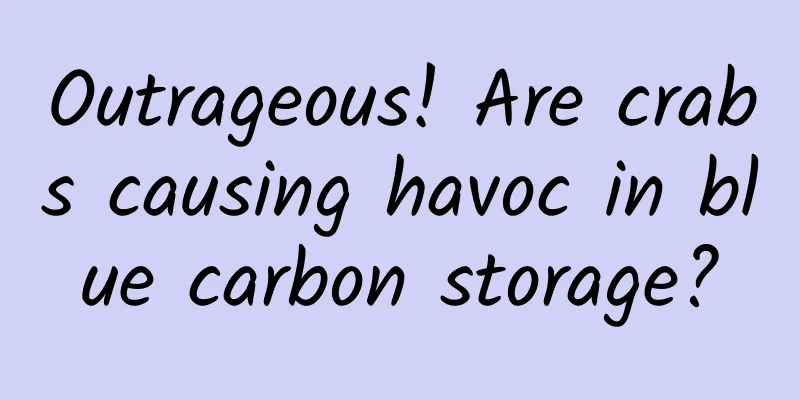Outrageous! Are crabs causing havoc in blue carbon storage?

|
Recently, the Yantai Coastal Research Institute of the Chinese Academy of Sciences, in collaboration with the Southern University of Science and Technology and other domestic and foreign institutions, has made new progress in the study of the impact of coastal benthic bioturbation on the stability of blue carbon storage. The relevant paper was published in National Science Advances. Coastal wetlands are important organic carbon reservoirs and play a key role in regulating global carbon cycles and climate change. Dissolved organic matter (DOM) is an important substrate or product of biogeochemical processes, affecting the metabolism, nutrient absorption, trace metal cycle, and microbial community structure and function of coastal wetland ecosystems. Benthic animals such as fiddler crabs are widely inhabited in coastal wetlands. Their bioturbation behaviors such as foraging and burrowing greatly affect the material cycle process at the sediment interface. Fiddler crab bioturbation can regulate organic carbon storage in sediments by changing DOM composition, increasing greenhouse gas emissions and pore water exchange. The author's earlier research found that benthic bioturbation in salt marsh wetlands can reduce the burial potential of "blue carbon" in sediments and caves through tidal scouring. In addition, the increased greenhouse gas emissions from fiddler crab caves in mangroves and salt marshes can offset 35%-134% of the sedimentary carbon burial. Therefore, clarifying the impact mechanism of fiddler crab caves on coastal DOM cycles is conducive to understanding the evolution of coastal blue carbon reserves. The research team selected four typical fiddler crab habitats along the climate gradient of the Chinese mainland coastline, including mangroves, salt marshes, light beaches and tidal creeks, set up 53 pairs of sampling points, and conducted a comparative survey of more than 1,000 fiddler crab cave sediments and adjacent sediment matrices (Figure 1). By integrating the changes in the water-extracted chemical properties, iron and manganese mineral components, DOM spectral properties, and biochemical components of sediments disturbed by fiddler crabs (Figure 2), it was found that the fluorescence index (FI) value in the cave was higher than that in the sediment matrix, and the relative abundance of active organic molecular components (lipids) in the fiddler crab cave increased by 59%, indicating that the bioturbation of fiddler crabs significantly enhanced microbial activity. It is also worth noting that in estuaries, the DOM concentration of fiddler crab cave sediments is generally lower than that of the surrounding sediment matrix (Figure 1). Fig. 1 Distribution of sampling points in the study, (a) Spatial distribution of sampling points in fiddler crab habitats, including four habitats: mangroves, salt marshes, light beaches and tidal creeks (b) Spatial distribution of the ratio of organic matter concentration in and around fiddler crab holes Fig. 2 Effects of fiddler crabs on organic matter in sediments By analyzing the Spearman correlations between individual organic molecules and iron-manganese mineral components and climate gradients, we found that: (1) fiddler crab burrows enhance the release of active organic matter from iron oxides and oxidizable manganese minerals; (2) after being released, active organic matter is utilized by microorganisms as inert organic matter (Figure 3); (3) as temperature and rainfall gradients increase, the crab burrow microenvironment cannot provide sufficient thermodynamic energy for microorganisms to utilize these active molecules (Figure 4). Figure 3 Spearman correlation between single organic molecules and iron-manganese minerals Fig. 4 Spearman correlations between individual organic molecules and mean annual temperature (MAT) and mean annual rainfall (MAP) By calculating the Gibbs half-reaction free energy of organic matter as an indicator of DOM burial stability, the researchers found that fiddler crab bioturbation significantly reduced the burial stability of blue carbon in the coastal zone (Figure 5), among which mangroves were the most affected, followed by beaches, tidal gullies and salt marshes. Fig. 5 Gibbs half-reaction free energy of organic matter in sediment matrix and crab burrows The above work proves that bioturbation by fiddler crabs will weaken the protection of iron and manganese minerals on organic matter, reduce the stability of coastal blue carbon burial, and increase the climate gradient, which will aggravate this reaction (Figure 6). Future research needs to adopt a more microscopic method to study the mechanism of the impact of fiddler crab disturbance on the coastal blue carbon cycle. For more details on the study, please read the original article: Benthic bioturbations weaken the stability of blue carbon storage. National Science Open. doi: 10.1360/nso/20240052 |
Recommend
Li Ligang - The secret of wealth for powerful bosses and growing companies
Li Ligang - The secret wealth resource for powerf...
How well can materials perform when they are “freed” from gravity and are evenly heated and solidified?
Produced by: Science Popularization China Author:...
Is Changhong redefining air conditioning?
Recently, Meiling Electric Appliances, a subsidia...
Is it worth investing in WeChat Moments advertising? HOW DOES IT PERFORM?
Why use WeChat advertising ? Traditional advertis...
If you see these at the beach in summer, run away! Don't touch them with your hands
Due to the high temperatures in recent days, visi...
There are 3 basic ways to get traffic when promoting APP!
I have been working in operations for a year, and...
How much does it cost to attract investment for the Chongzuo Commerce Mini Program?
How much does it cost to attract investment for t...
618 marketing earned 5 million in one hour, what do new brands rely on?
This year's 618 has finally kicked off. One h...
Samsung S8 is priced cautiously to please Chinese users. Do you buy it?
Samsung's new generation flagship smartphone ...
Apple iOS 10.1 Developer Preview Beta 3 Push
[[173173]] On October 11, Apple pushed the third ...
“Curious” marketing: How to create virality?
Curiosity is one of the internal motivations for ...
How to use holiday trends to create hits?
Festivals are the focus of marketing planning eve...
Mendel died in obscurity, but is now hailed as the father of genetics. What did he discover?
In today's biological community, everyone kno...
The algorithm recommendation mechanism of Toutiao and Douyin is not as "stupid" as people say on the Internet!
In 1865, on the flat land outside Yongdingmen in ...
China Automobile Dealers Association: Passenger car new four modernizations index is 64.2 in October 2020
The Passenger Car New Four Modernizations Index, ...









